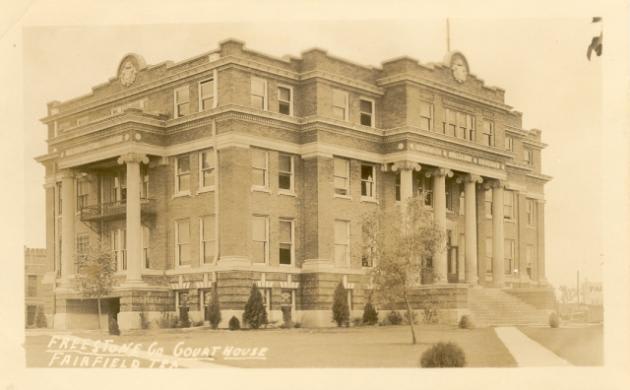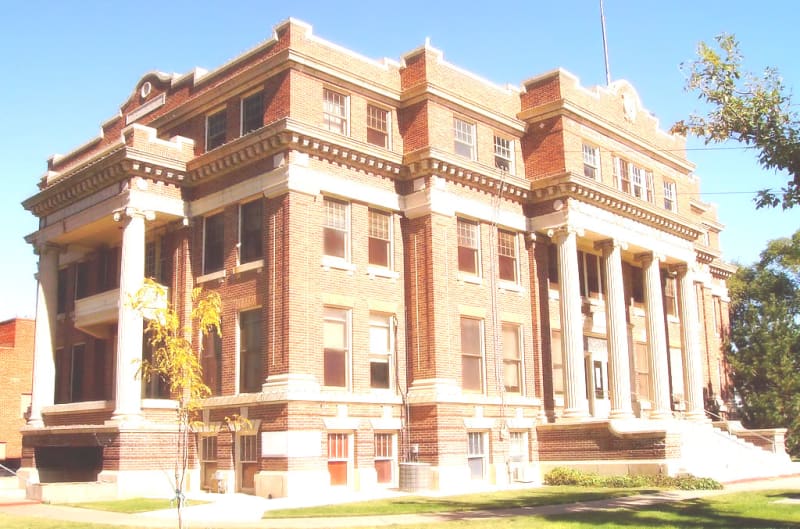WEJ83
Structural
- Aug 14, 2015
- 13
Recently did a visual on a 1919 era courthouse. East and West ends are mirrored sunken entrances, with a steel lintel above carrying brick and spanning 20' or so. The lintel itself is obviously deflected approximately 2", however the supported brick above is perfectly level. The bottom mortar joint varies in depth along the length of the lintel to make up the difference. Same condition on both ends of the building.
Trying to resolve in my head the deflection. First thought was that at some point the deflection had damaged the brick and it had been removed and replaced without replacing the lintel. The brick and mortar look original though, although this could have occurred 60, 70, or 80 or more years ago and picking out a repair may be difficult.
Ruling out physical damage or degradation of the lintel because each side is exactly the same.
Another thought was that the lintel was pre-deflected for the dead loads before the masonry was installed. Possibly to allow a lighter or shallower lintel section. Was this possibly a design practice in buildings of this era? or does anyone else have an alternate possible explanation?
[URL unfurl="true"]https://res.cloudinary.com/engineering-com/image/upload/v1644550092/tips/Lintel_iw1mmy.pdf[/url]
Trying to resolve in my head the deflection. First thought was that at some point the deflection had damaged the brick and it had been removed and replaced without replacing the lintel. The brick and mortar look original though, although this could have occurred 60, 70, or 80 or more years ago and picking out a repair may be difficult.
Ruling out physical damage or degradation of the lintel because each side is exactly the same.
Another thought was that the lintel was pre-deflected for the dead loads before the masonry was installed. Possibly to allow a lighter or shallower lintel section. Was this possibly a design practice in buildings of this era? or does anyone else have an alternate possible explanation?
[URL unfurl="true"]https://res.cloudinary.com/engineering-com/image/upload/v1644550092/tips/Lintel_iw1mmy.pdf[/url]


